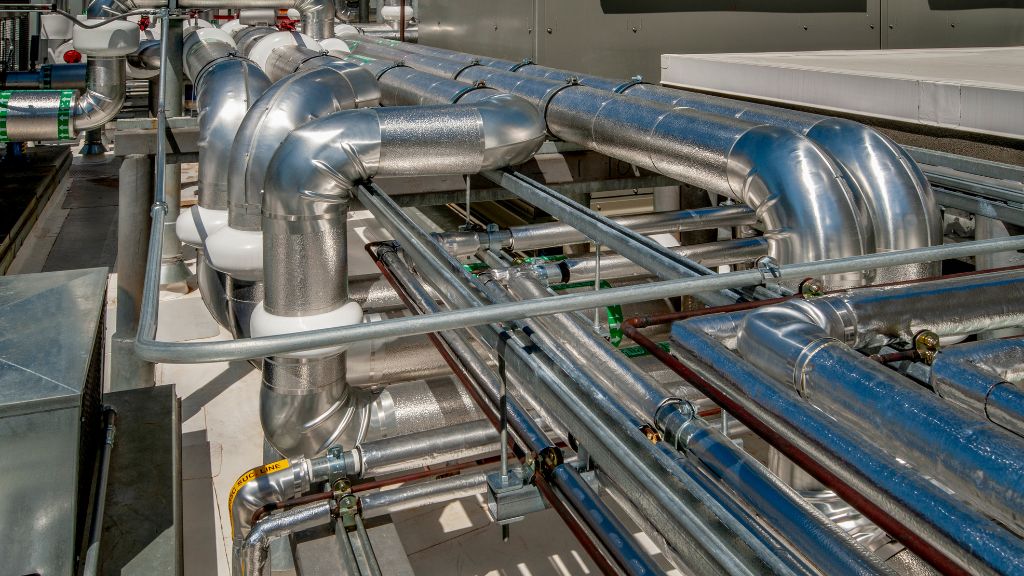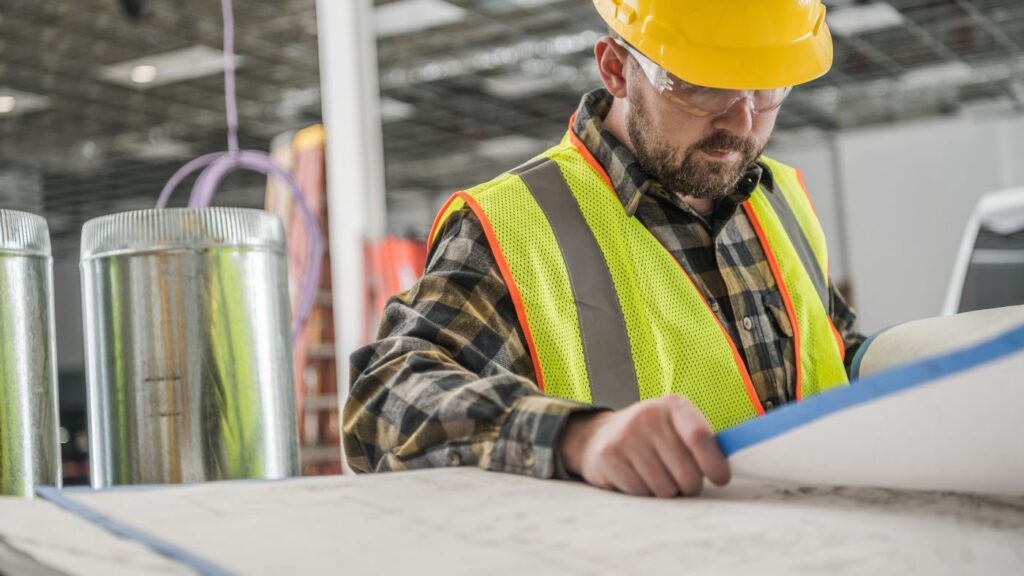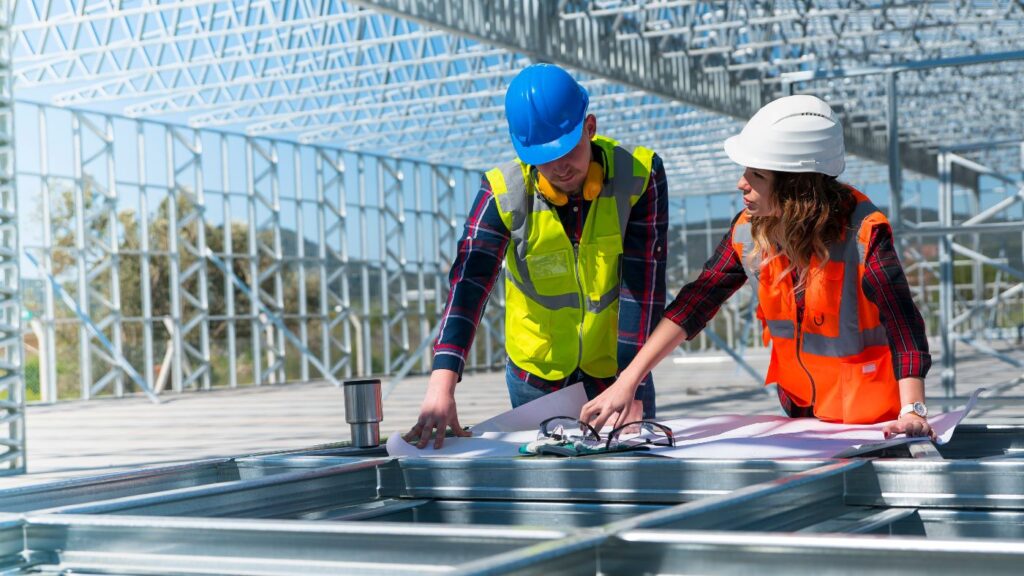Estimated reading time: 8 minutes
Table of contents
- Why Cannabis HVAC Design Is Critical
- Fundamentals of Cannabis HVAC Design
- Cannabis Facility Engineering for Scalability
- Indoor Air Quality in Cannabis Facilities
- Odor Control and Community Relations
- Cannabis Energy Management in HVAC Design
- Cannabis Compliance Standards in HVAC Design
- Future Trends in Cannabis HVAC Engineering
- Choosing a Cannabis HVAC Design Partner
- Cannabis HVAC Design FAQs
- Additional Resources
- Free eBooks For Cannabis Business Success
- Latest Articles
Cliff Notes: Understanding the critical components of cannabis HVAC Design
Objective: Cannabis HVAC design is the foundation of successful cultivation facilities. Proper systems reduce costs, improve indoor air quality, ensure compliance, and support long-term scalability.
Key Components:
- Cannabis HVAC design drives cultivation efficiency.
- Grow room HVAC design balances climate conditions.
- Cannabis facility engineering builds scalability.
- Indoor air quality safeguards plants and workers.
- Cannabis energy management cuts operating costs.
- Compliance-focused HVAC design protects licenses.
Don’t let poor HVAC design put your grow at risk. Our cannabis HVAC consultants help cultivators balance humidity, improve energy efficiency in cannabis facilities, and stay ahead of compliance challenges. Contact Catalyst BC to optimize your indoor cannabis cultivation environment.

Why Cannabis HVAC Design Is Critical
The success of any indoor cannabis cultivation operation begins with proper cannabis HVAC design. Unlike traditional HVAC retrofits, cannabis cultivation HVAC design requires tailored engineering that accounts for plant transpiration, odor control, strict regulatory requirements, and long-term energy efficiency. Poor cannabis environmental design can lead to catastrophic crop loss, spiraling energy bills, and costly compliance failures.
According to the National Renewable Energy Laboratory (NREL), HVAC systems can account for nearly 40% of total energy use in cannabis facilities, underscoring the importance of thoughtful cannabis HVAC engineering. For operators investing millions in cultivation buildouts, cutting corners on HVAC is not an option—it’s the foundation of successful, sustainable operations.
Fundamentals of Cannabis HVAC Design
Temperature and Humidity Balance
Grow room HVAC design requires precise management of temperature and humidity to keep plants thriving across growth phases. Cannabis plants release large amounts of water vapor, which increases relative humidity and puts stress on standard commercial HVAC systems.
- Vegetative stage: Plants perform best at 70–85°F and 50–70% humidity.
- Flowering stage: Humidity should be lowered to 40–50% to prevent powdery mildew, mold, and botrytis.
- Drying and curing rooms: Require even more control, with temperatures around 60–70°F and 45–55% humidity.
By applying cannabis cultivation HVAC design principles, growers avoid costly crop loss while maintaining product consistency across batches.
Airflow and Distribution
Uneven airflow creates microclimates where pests and pathogens thrive. Cannabis climate system design incorporates advanced duct layouts, circulation fans, and variable-speed drives that maintain steady, uniform air movement. Airflow management is also critical for reducing condensation on leaves, which is a common driver of fungal outbreaks.
A well-engineered cannabis facility HVAC design also balances positive and negative pressure zones to control odors and ensure proper intake and exhaust. Without this balance, contaminants can spread, compliance inspections may fail, and community complaints may rise.
Cannabis Facility Engineering for Scalability
Engineering Beyond a Single Grow Room
Cannabis facility engineering involves more than keeping one room comfortable. Facilities that start small but anticipate expansion require systems designed with scalability in mind. Cannabis facility planning includes:
- Designing modular HVAC systems that can be expanded room by room
- Implementing energy recovery ventilators (ERVs) to reclaim energy from exhaust systems
- Integrating HVAC with fertigation, irrigation, and lighting systems
- Building redundancy to ensure compliance even if equipment fails
This forward-thinking approach to cannabis infrastructure design allows cultivators to scale without the need for disruptive—and expensive—system overhauls.
Planning Ahead for Growth
Many operators underestimate licensing and future expansion requirements. By incorporating flexibility into cultivation facility engineering, businesses can pivot quickly as local markets grow. Modular cannabis operations engineering ensures new grow rooms can be brought online without disrupting existing ones.
Indoor Air Quality in Cannabis Facilities
Protecting Plants and People
Indoor air quality in cannabis facilities affects more than yields—it safeguards workers, compliance, and brand reputation. Contaminated air can spread mold spores, volatile organic compounds (VOCs), or chemical residues.
Cannabis clean air systems typically include:
- HEPA filters to capture particulates
- Activated carbon filters for odor removal
- UV sterilization systems to eliminate pathogens
- Airflow zoning to separate different cultivation stages
Cannabis Air Standards and Worker Safety
Regulators require cultivation facilities to maintain safe cannabis indoor air quality levels for employees. Excess CO₂ concentrations can impair worker health, while mold exposure presents respiratory risks. Advanced cannabis facility ventilation ensures proper dilution and monitoring of indoor gases.
Odor Control and Community Relations
Odor is one of the most common sources of community complaints. Grow room air purity and advanced cannabis air management systems help operators mitigate risk. Maintaining odor compliance strengthens licensing security and builds goodwill with surrounding communities.
Cannabis Energy Management in HVAC Design
Energy-Saving Cannabis Systems
Energy is the single largest operating cost in most cultivation facilities. Smart cannabis energy management strategies include:
- Variable-speed drives to reduce unnecessary energy use
- Demand-based cooling that adjusts to environmental conditions
- Dehumidification recovery systems that reclaim latent energy
- Building automation systems to track efficiency in real time
The U.S. Department of Energy (DOE) has noted that optimized cannabis power management strategies can reduce energy use by up to 30%—a significant margin for operators in competitive markets.
Integrating Renewable Energy Sources
Sustainability is not just a buzzword—it is increasingly a licensing requirement. Many operators integrate solar, wind, or geothermal systems into cannabis energy efficiency strategies. These energy-saving cannabis systems not only cut utility bills but also demonstrate environmental responsibility, which can be leveraged in community outreach and brand positioning.
Cannabis Compliance Standards in HVAC Design
Designing for Licensing and Regulations
Every state imposes unique cannabis compliance standards that govern HVAC systems. Most require facilities to document:
- Energy consumption and efficiency reports
- Odor control measures
- Indoor air quality monitoring
- Environmental impact assessments
Designing HVAC systems with cannabis regulatory standards in mind prevents costly redesigns, failed inspections, or licensing delays.
Cannabis Safety Standards for Workers
Worker safety requirements under OSHA overlap with cannabis environmental regulations. Proper cultivation facility compliance ensures HVAC systems keep CO₂ levels safe, minimize mold exposure, and maintain adequate ventilation for employees.
Future Trends in Cannabis HVAC Engineering
Smart HVAC and Automation
Artificial intelligence and IoT sensors are transforming cannabis HVAC engineering. With smart sensors, systems automatically adjust temperature, humidity, and airflow to meet cultivation setpoints. Automation also simplifies compliance reporting by maintaining real-time data logs.
Sustainable Cannabis Environmental Design
The industry is moving toward carbon-neutral solutions. Cannabis climate system design increasingly incorporates low-GWP refrigerants, geothermal heat exchange, and modular HVAC units. These innovations position cultivators for long-term success in an industry under pressure to reduce its environmental footprint.
Choosing a Cannabis HVAC Design Partner
Selecting the right partner is one of the most important steps in cannabis facility HVAC design. Many contractors lack experience in cannabis licensing compliance or the biological needs of the plant. Cultivators should seek firms with:
- Proven cannabis-specific engineering expertise
- Knowledge of cannabis regulatory standards across multiple states
- Experience with energy optimization in controlled environments
- Capacity to scale systems with business growth
Work with a trusted partner that understands cannabis compliance standards. Catalyst BC ensures that cannabis cultivation HVAC design is future-ready, compliant, and efficient. Contact us today to get started with a complimentary consultation.
Cannabis HVAC Design FAQs
Cannabis HVAC design is the specialized engineering of heating, ventilation, and cooling systems tailored to cannabis cultivation.
Cannabis HVAC engineering accounts for plant transpiration, odor control, and compliance regulations not present in conventional systems.
Grow room HVAC design balances humidity, airflow, and temperature, which are vital for plant health and yield optimization.
Cannabis facility engineering ensures systems meet state requirements for odor, energy use, and air quality reporting.
Safe cannabis indoor air quality prevents harmful CO₂ levels, mold exposure, and respiratory risks among employees.
Yes. Cannabis energy optimization strategies significantly reduce operating expenses while boosting sustainability.
Cannabis compliance standards require systems to manage odors, document energy use, and maintain clean air quality.
AI-driven smart HVAC, modular climate systems, and renewable integration are leading trends. Modern cannabis compliance standards continue to evolve as technology and energy efficiency improves.
Experience in cannabis cultivation HVAC design, compliance knowledge, and energy optimization expertise are key.
Catalyst BC specializes in cannabis HVAC design, compliance planning, and sustainable energy solutions. We help cultivators build scalable, efficient, and compliant facilities.
Additional Resources
Free eBooks For Cannabis Business Success
Latest Articles
- Cannabis 280E Compliance and COGS Optimization Expert StrategiesThe cannabis industry operates under a unique federal tax burden imposed by Internal Revenue Code (IRC) §280E. While state legalization has flourished, this provision, which denies deductions for ordinary business expenses of trades dealing in controlled substances, remains the single greatest threat to cannabis profitability.
- Owner’s Rep for Cannabis Dispensary Buildout: Expert Compliance & Project ManagementNavigating the highly-regulated world of a cannabis dispensary buildout requires specialized expertise beyond standard construction. The complexity of securing a final operating license, controlling costs, and preventing opening delays for a cannabis dispensary hinges on professional guidance. This is why securing an experienced Owner’s Rep for Cannabis Dispensary Buildout is a critical first step.
- The Indispensable Owner’s Rep for Cannabis Cultivation Facility Buildout: Expert Project Management to Prevent Cost OverrunsIn this high-stakes arena, the Owner’s Rep for Cannabis Cultivation Facility buildout is the crucial strategic partner. They are the expert professional who ensures the owner’s vision is translated into a successful, operational, and profitable reality.
- Cannabis Dispensary Compliance: Training, Inventory & ProfitabilityIn today’s regulated cannabis market, cannabis dispensary compliance is not optional—it is the foundation of a sustainable and profitable retail business. Every dispensary, from boutique shops to multi-state operators, must follow strict dispensary regulatory compliance standards, maintain accurate cannabis inventory management systems, and invest in ongoing cannabis dispensary training programs.
- Beyond Compliance: Implementing a Cannabis Dispensary Secret Shopper ProgramAs a cannabis retail owner, you operate in a high-stakes environment where federal prohibition meets state-regulated commerce. Your retail floor is not just a sales hub—it’s a constant target for mandatory inspection and the front line for brand differentiation. The most critical tool for navigating this complex reality is the professional, recurring Cannabis Secret Shopper program.
- Architects of the Cannabis Industry: What Defines An Expert Canna Consultant?An expert Canna Consultant is the strategic architect and operational engineer of a cannabis venture. They are specialized cannabis industry consultants who translate ambiguous legislation into profitable business processes.











